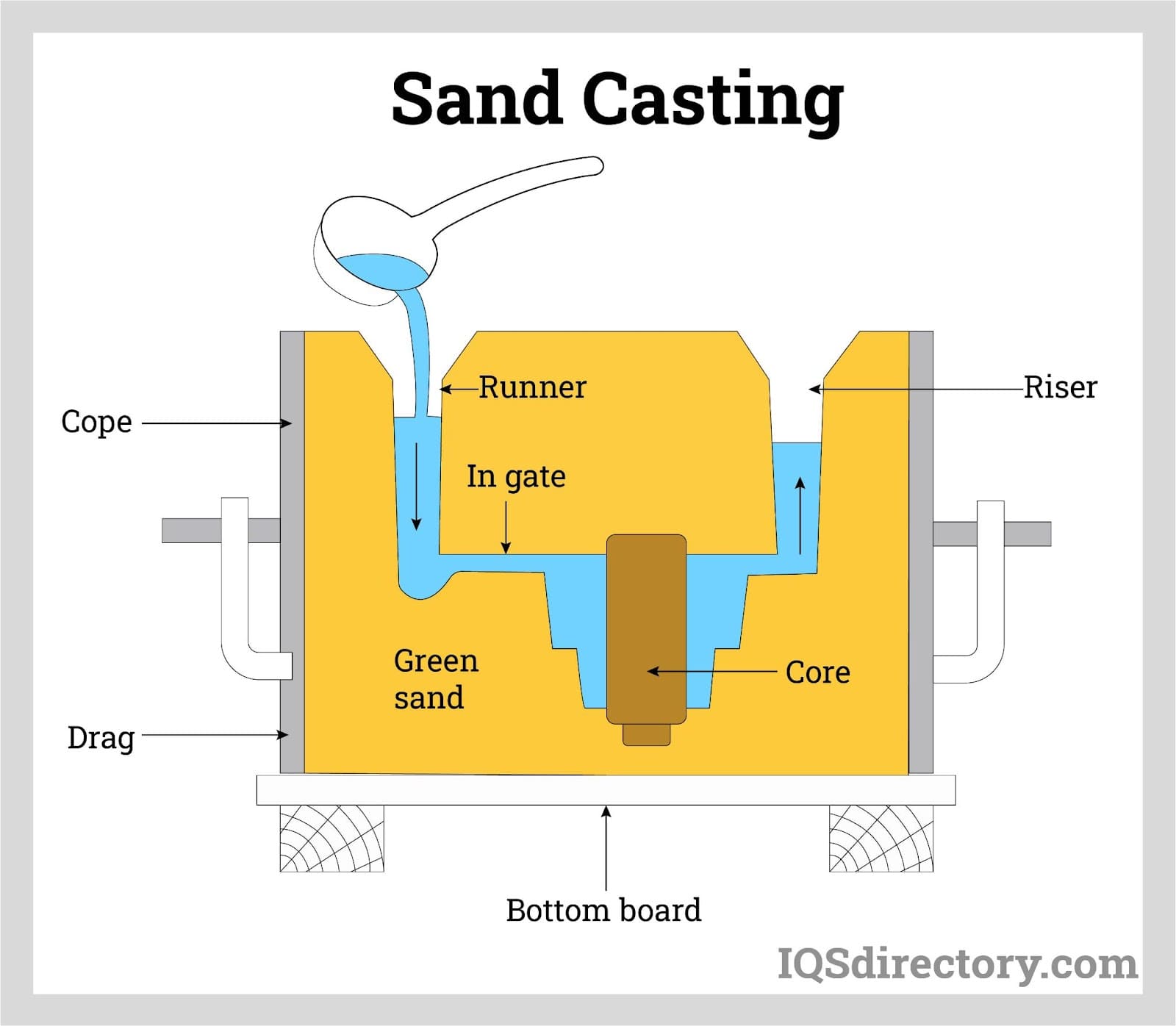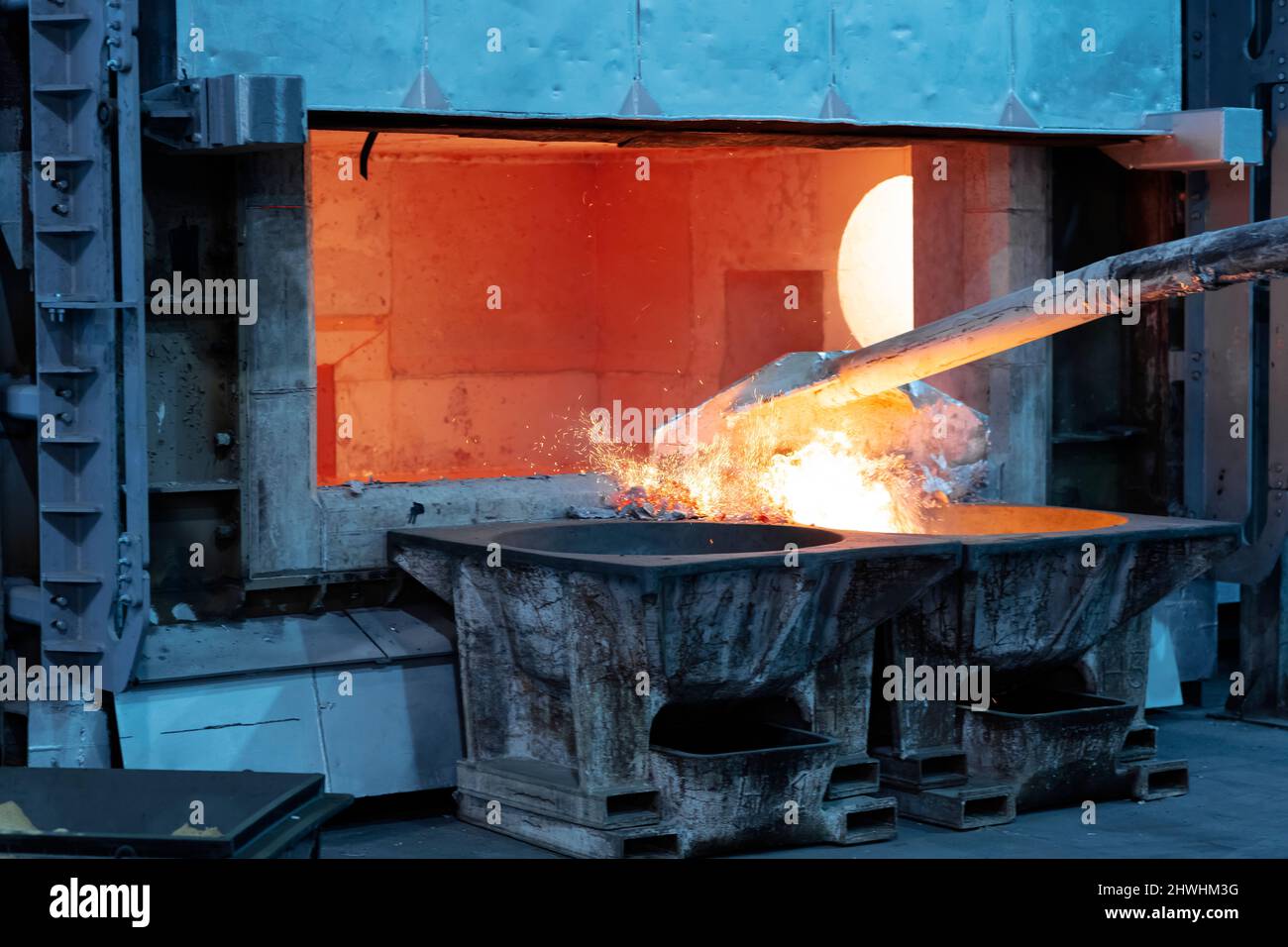Aluminum Foundry Wisconsin supports sustainable casting practices
Wiki Article
Exactly How Aluminum Foundry Adds to Improvements in Aerospace Engineering
Aluminum foundries are essential to developments in aerospace design. They produce lightweight, high-strength elements that are crucial for modern aircraft. Via sophisticated casting strategies, these factories produce intricate geometries that enhance architectural integrity. Furthermore, the advancement of superior Aluminum alloys supports the industry's emphasis on fuel efficiency and sustainability. However, difficulties remain in the manufacturing procedure. Recognizing these variables discloses the profound impact of Aluminum on aviation's future.The Significance of Lightweight Materials in Aerospace Design
As the aerospace market remains to develop, the value of light-weight materials comes to be progressively obvious. The demand for efficiency and sustainability drives engineers to prioritize using products that reduce general weight without jeopardizing structural honesty. Light-weight materials, specifically Aluminum, play a crucial role in improving fuel performance, enhancing haul capability, and increasing the general efficiency of aircraft.The assimilation of these materials enables for innovative styles, enabling producers to develop even more wind resistant forms that can hold up against severe conditions. The decrease in weight not only reduces functional prices but additionally adds to a reduced ecological impact, aligning with worldwide efforts toward sustainability in aviation.
Advanced Casting Techniques in Aluminum Foundries
Advanced casting methods in Aluminum foundries play a critical role in aerospace engineering by allowing the manufacturing of accurate and light-weight components. Developments in mold style and precision spreading procedures are vital in achieving perfect efficiency and structural integrity. Furthermore, the growth of light-weight alloys enhances the general efficiency and effectiveness of aerospace applications.Ingenious Mold Design
Ingenious mold and mildew design plays an important function in the efficiency and efficiency of Aluminum shops, particularly within the aerospace industry. By leveraging sophisticated products and techniques, modern-day molds can be engineered to hold up against high temperature levels and stress, ensuring peak efficiency during the casting process. These styles typically include complicated geometries that permit the production of lightweight yet structurally sound elements, essential for aerospace applications. In addition, using computer-aided style (CAD) software application promotes accurate modeling, making it possible for shops to improve and replicate mold and mildew styles before physical manufacturing begins. This not just enhances the high quality of cast components but also reduces waste and lead times, bring about substantial cost financial savings. On the whole, ingenious mold and mildew design is a cornerstone of progression in Aluminum Foundry innovation for aerospace engineering.Precision Casting Processes
The efficiency of cutting-edge mold and mildew designs flawlessly integrates with precision spreading procedures, which are necessary for generating high-quality Aluminum elements in aerospace engineering. These processes, including sand casting, die casting, and financial investment spreading, ensure the production of complex geometries with tight resistances. Advanced strategies like vacuum casting and stress pass away casting improve the stability and surface coating of the end products. Precision spreading lessens material waste while maximizing the mechanical residential or commercial properties of Aluminum, critical for aerospace applications. In addition, employing real-time surveillance and advanced simulation devices throughout the casting procedure enables prompt adjustments, resulting in improved quality assurance. Jointly, these precision spreading processes setting Aluminum shops at the forefront of aerospace development, supporting the sector's demand for dependability and efficiency.Lightweight Alloy Growth
As aerospace designers look for to boost gas effectiveness and performance, light-weight alloy development ends up being an important focus in Aluminum factories. These factories employ sophisticated spreading techniques to create alloys that provide premium strength-to-weight ratios. Advancements in alloy make-up, consisting of the incorporation of aspects like lithium and magnesium, make it possible for the manufacturing of products that endure severe problems while reducing total aircraft weight. Techniques such as die casting and investment spreading assist in the precision manufacturing of intricate shapes, which are vital for aerospace applications. In addition, continuous study intends to enhance these alloys for boosted mechanical buildings and enhanced toughness. By prioritizing lightweight alloy development, Aluminum foundries significantly contribute to the development of aerospace engineering, leading the way for a lot more lasting and reliable airplane designs.
Enhancing Architectural Stability With Aluminum Parts
Aluminum components provide substantial advantages in boosting structural honesty within aerospace design. Their lightweight nature adds to general performance while maintaining stamina, which is crucial for airplane efficiency. In addition, the anxiety resistance residential or commercial properties of Aluminum help guarantee the longevity and dependability of aerospace structures under various operational problems.
Lightweight Product Advantages
While conventional products frequently jeopardize weight for toughness, making use of Aluminum elements in aerospace engineering offers significant benefits in structural stability. Aluminum's light-weight nature adds to total design efficiency, enabling more structured aircraft that eat much less fuel, thereby boosting sustainability. The material's outstanding strength-to-weight ratio warranties that elements keep toughness without including unnecessary mass. This top quality promotes boosted performance and agility in trip, as well as maximized payload capacities. Furthermore, Aluminum's resistance to rust extends the life expectancy of aerospace structures, decreasing maintenance expenses and improving safety and security. As producers significantly take on Aluminum alloys, the aerospace market experiences a transformative change in the direction of much more reliable and reliable engineering services that prioritize both performance and ecological obligation.Stress Resistance Properties
Although different products possess unique residential properties, Aluminum's extraordinary stress and anxiety resistance sticks out as a critical consider enhancing the architectural stability of aerospace components. This resistance plays an essential role in making certain that airplane can stand up to various functional stresses, consisting of exhaustion, impact, and environmental conditions. Aluminum alloys, specifically engineered for aerospace applications, show high tensile strength while preserving lightweight attributes, making it possible for engineers to design more effective structures - Aluminum Foundry. Furthermore, the capability of Aluminum to sustain cyclic loading without significant deformation adds to the durability and reliability of aerospace elements. As advancements continue in Aluminum Foundry methods, the growth of stress-resistant Aluminum components guarantees further enhancements in performance, security, and performance throughout the aerospace market, solidifying Aluminum's function as a recommended material in modern designGas Efficiency Improvements Driven by Aluminum Innovations
As the aerospace sector looks for to enhance fuel effectiveness, innovative uses Aluminum have become an essential solution. Aluminum's lightweight nature especially decreases aircraft weight, permitting lower fuel intake during flight. This reduction in weight is vital, as even tiny reductions can lead to significant enhancements in general gas economic situation.Advanced Aluminum alloys, designed for improved stamina and durability, enable makers to develop elements that maintain structural stability while lessening mass - Aluminum Foundry. In addition, the assimilation of Aluminum in airframes and engine parts facilitates improved the rules of aerodynamics, adding to reduced drag and increased efficiency
The adoption of Aluminum in aerospace not just fulfills the demand for fuel-efficient design but likewise straightens with regulative stress for lower emissions. As these developments remain to evolve, they play a considerable role in setting brand-new standards for fuel efficiency, guaranteeing that the aerospace industry can meet growing financial and environmental obstacles.

The Function of Aluminum in Sustainable Aeronautics Practices
The increasing emphasis on sustainable air travel techniques has positioned Aluminum as a crucial material in the quest for greener aircraft style. Recognized for its lightweight homes, Aluminum significantly lowers airplane weight, causing lower fuel intake and emissions. Its recyclability better improves its sustainability account, as Aluminum can be reused indefinitely without loss of quality. This characteristic sustains a round economy within the aviation sector, decreasing waste and source depletion.Developments in Aluminum alloys have boosted their stamina and rust resistance, enabling for longer solution life and decreased upkeep demands. These technologies promote the growth of extra reliable aircraft frameworks, adding to overall sustainability efforts. In addition, Aluminum's thermal conductivity plays an important duty in energy-efficient designs, enhancing systems such as warmth exchangers. Jointly, these features emphasize Aluminum's crucial role ahead of time lasting aviation, lining up with worldwide initiatives targeted at minimizing the environmental effect of air link traveling.
Challenges Encountered by Aluminum Foundries in Aerospace Manufacturing
While Aluminum factories play a necessary function in aerospace production, they encounter substantial obstacles that can influence production effectiveness and high quality. One major obstacle is the stringent quality assurance criteria required in the aerospace market. Any problem can compromise safety and efficiency, requiring rigorous evaluation procedures that prolong manufacturing timelines. Additionally, foundries usually emulate rising and fall basic material prices, which can affect prices and profitability. The complexity of Aluminum alloys used in aerospace applications further makes complex the manufacturing process, as specific formulas are vital for achieving wanted mechanical properties. Experienced labor shortages hinder the capacity to maintain top notch manufacturing levels. Ecological laws enforce limitations on emissions and waste management, requiring foundries to invest in lasting practices, which can be cost-prohibitive. These variables collectively produce a landscape where Aluminum factories should continually adjust to meet the progressing needs of aerospace manufacturing while guaranteeing security and compliance.Future Patterns in Aluminum Applications for Aerospace Engineering
With developments in technology and boosting needs for effectiveness, the future of Aluminum applications in aerospace engineering is poised for considerable makeover. The assimilation of cutting-edge Aluminum alloys and composites is anticipated to enhance strength-to-weight proportions, resulting in more fuel-efficient airplane designs. On top of that, innovations in additive manufacturing techniques will certainly enable the manufacturing of complicated Aluminum frameworks that were previously impossible, optimizing performance and lowering waste.
Sustainable techniques will certainly play an important function, with a growing emphasis on reusing Aluminum to decrease environmental effect. The aerospace sector is likely to accept smarter manufacturing procedures, such as automation and artificial intelligence, making sure better and precision in Aluminum parts. Collaborations in between Aluminum shops and aerospace firms will foster study and advancement, leading the method for new applications that meet the strict requirements of contemporary aerospace engineering. Generally, the future looks assuring for Aluminum's role fit the skies
Frequently Asked Inquiries
What Are the Ecological Effects of Aluminum Production in Aerospace?
The environmental why not look here impacts of Aluminum manufacturing in aerospace consist of significant power consumption, greenhouse gas exhausts, and habitat disruption. In addition, mining procedures can bring about soil destruction and water contamination, raising issues concerning sustainability and eco-friendly balance.Exactly How Does Aluminum Compare to Various Other Materials in Aerospace Applications?
Aluminum supplies an unique mix of lightweight residential properties, rust resistance, and cost-effectiveness compared to various other materials. Its high strength-to-weight ratio makes it especially helpful for aerospace applications, enhancing fuel effectiveness and total performance in aircraft design.What Certifications Do Aluminum Foundry Employees Requirement for Aerospace Projects?
Aluminum Foundry workers require customized training in metallurgy and casting strategies, together with understanding of aerospace industry requirements. Accreditations in top quality control and safety protocols are likewise vital to guarantee conformity with rigid aerospace job demands.Are There Any Safety And Security Problems With Using Aluminum in Aerospace Design?
Safety and security concerns regarding Aluminum in aerospace design consist of sensitivity to exhaustion, stress and anxiety, and deterioration fractures. Appropriate treatment and alloy selection are vital to reduce these threats, ensuring structural honesty and general safety in aerospace applications.Exactly How Does Aluminum Recycling Benefit the Aerospace Market?
Aluminum recycling greatly profits the aerospace market by reducing material prices, lessening ecological impact, and preserving power. This sustainable technique improves the industry's efficiency while advertising the use of light-weight, high-performance components in airplane manufacturing.Advanced casting techniques in Aluminum shops play a crucial function in aerospace design by making it possible for the manufacturing of lightweight and accurate elements. Innovative mold and mildew layout plays an important role in the performance and efficiency of Aluminum shops, particularly within the aerospace field. As aerospace designers seek to boost fuel efficiency and performance, light-weight alloy growth ends weblink up being a vital focus in Aluminum factories. Aluminum alloys, particularly engineered for aerospace applications, show high tensile toughness while preserving light-weight characteristics, making it possible for engineers to create extra efficient frameworks. Partnerships in between Aluminum foundries and aerospace business will promote study and advancement, paving the means for brand-new applications that meet the strict requirements of modern-day aerospace design.
Report this wiki page